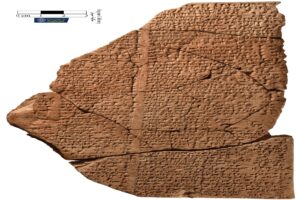We know more about giant dinosaurs from 165 million years ago than about our closest ancestor, the Neanderthal.
That’s why the discovery of a Neanderthal family — buried together in a Siberian cave — has electrified the scientific community.
The tantalizing new information about the social structure of our hominid relatives also tells a tragic story about this specific family. This family band of 11 Neanderthals likely died together, possibly from starvation.
Those are the primary findings of a report published this week in Nature, entitled Genetic insights into the social organization of Neanderthals.
Paleoanthropologists first unearthed Neanderthal bones and teeth in Siberia’s Chagyrskaya region in 2007. Since then, they have found 90,000 stone tools from our hominid ancestors. Neanderthals died out 40,000 years ago.
The lead researcher, celebrated Swedish geneticist Svante Paabo, has studied Neanderthals for decades. Through advanced DNA analysis, Paabo and his team determined some of the exact familial relationships of the buried proto-humans.
“I would not have thought we would be able to detect a father and daughter from bone fragments, or Neanderthal DNA in cave sediments, or any other of the things that are now becoming almost routine,” Dr. Paabo, a director at the Max Planck Institute for Evolutionary Anthropology in Leipzig, Germany, told The New York Times. “It has been an amazing journey.”

An illustration of a Neanderthal family. Photo: Shutterstock
A Nobel Prize for Neanderthal research
It’s no easy task to pull viable genetic material from 40,000-year-old bones, yet that’s exactly what Paabo has perfected.
In fact, the Swede eventually produced a complete Neanderthal genome — for which he received the Nobel Prize in Physiology earlier this month.
He started his implausible effort to decipher Neanderthal DNA back in 2006. Through advances in technology, Paabo could assemble the completed code from the damaged DNA of ancient bones.
He completed the genome in 2010. That led to other breakthroughs, like helping scientists understand differences in modern humans. Two years ago, Paabo and a colleague published another report in Nature about a sequence of Neanderthal DNA (still present in some humans today) that made COVID-19 symptoms more severe.
“It was certainly considered to be impossible to recover DNA from 40,000-year-old bones,” said Dr. Nils-Goran Larsson, the chairman of the Nobel Committee for Physiology or Medicine and a professor of medical biochemistry at the Karolinska Institute in Stockholm.
New info on Neanderthal society
Paabo and his team ultimately identified 11 people in the Chagyrskaya cave, including six adults and five children.
Co-author Laurits Skov said the bones all showed up in the same layer of sediment. That still includes a “small range” of a few thousand years. However, it’s more likely that the family all died around the same time, said Skov, a postdoctoral researcher at the University of California, Berkeley.
Skov thinks that the family lived in the cave while hunting bison in nearby grasslands. It’s possible the small family’s hunts failed one year, leading to starvation.
There are also fascinating possibilities created by the analysis of female Neanderthal DNA. Thus far, researchers have discovered more genetic diversity among women, suggesting that they moved from band to band.
“We estimate that between 60 to 100 percent of women in any community actually come from other communities,” Dr. Skov said.
This continued study of Neanderthals with modern methods suggests that a deeper understanding of our ancestors is just around the corner.






